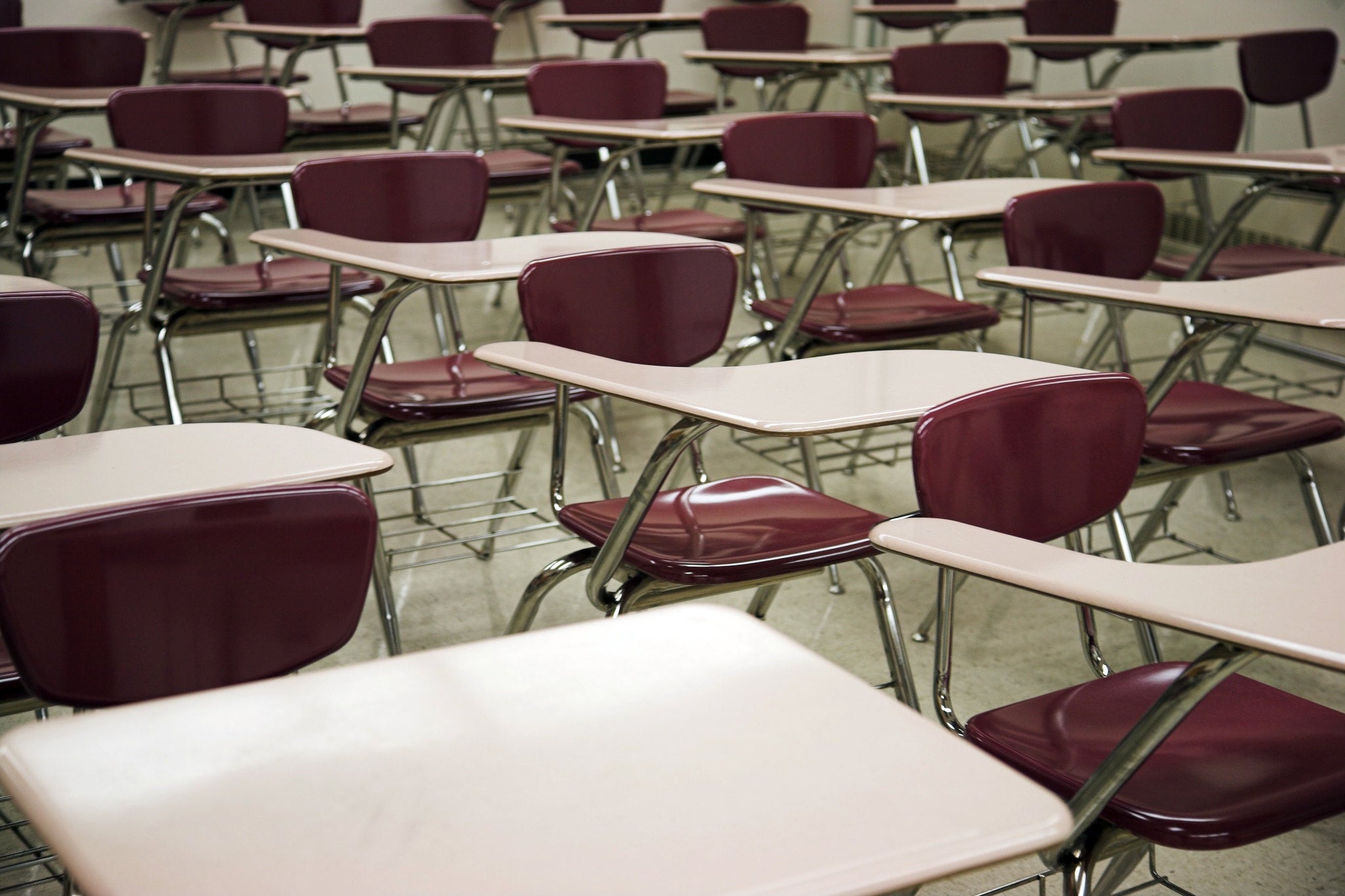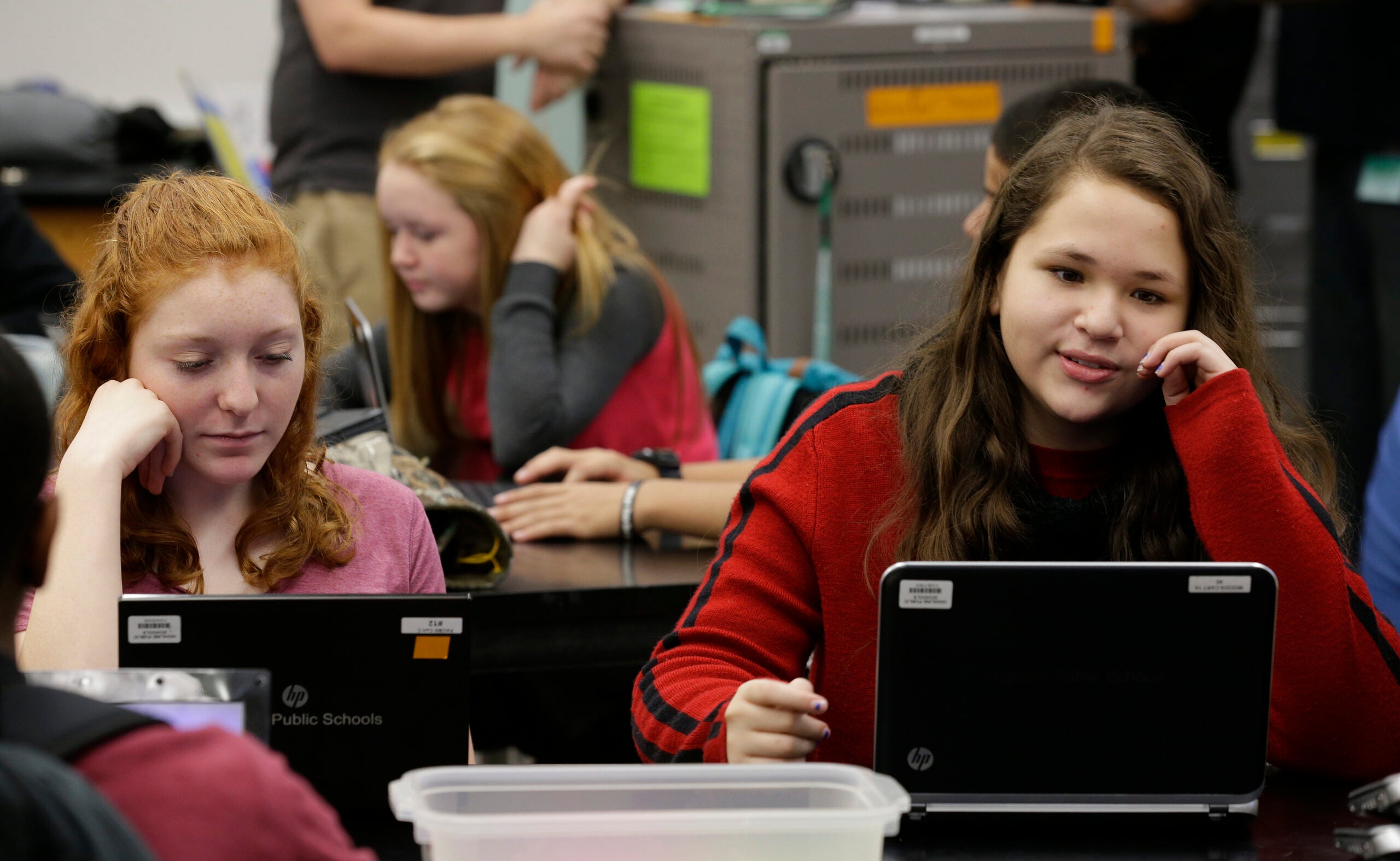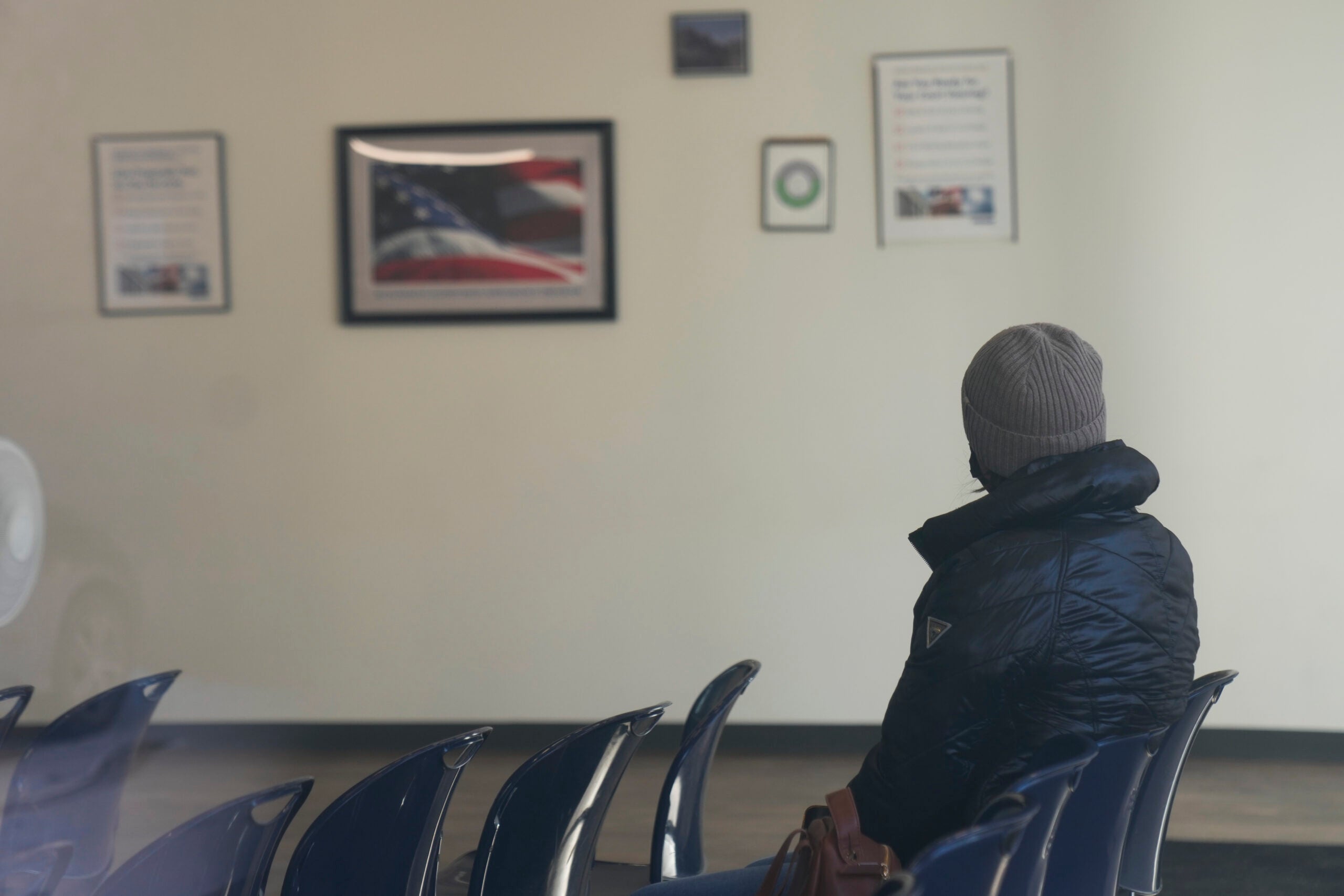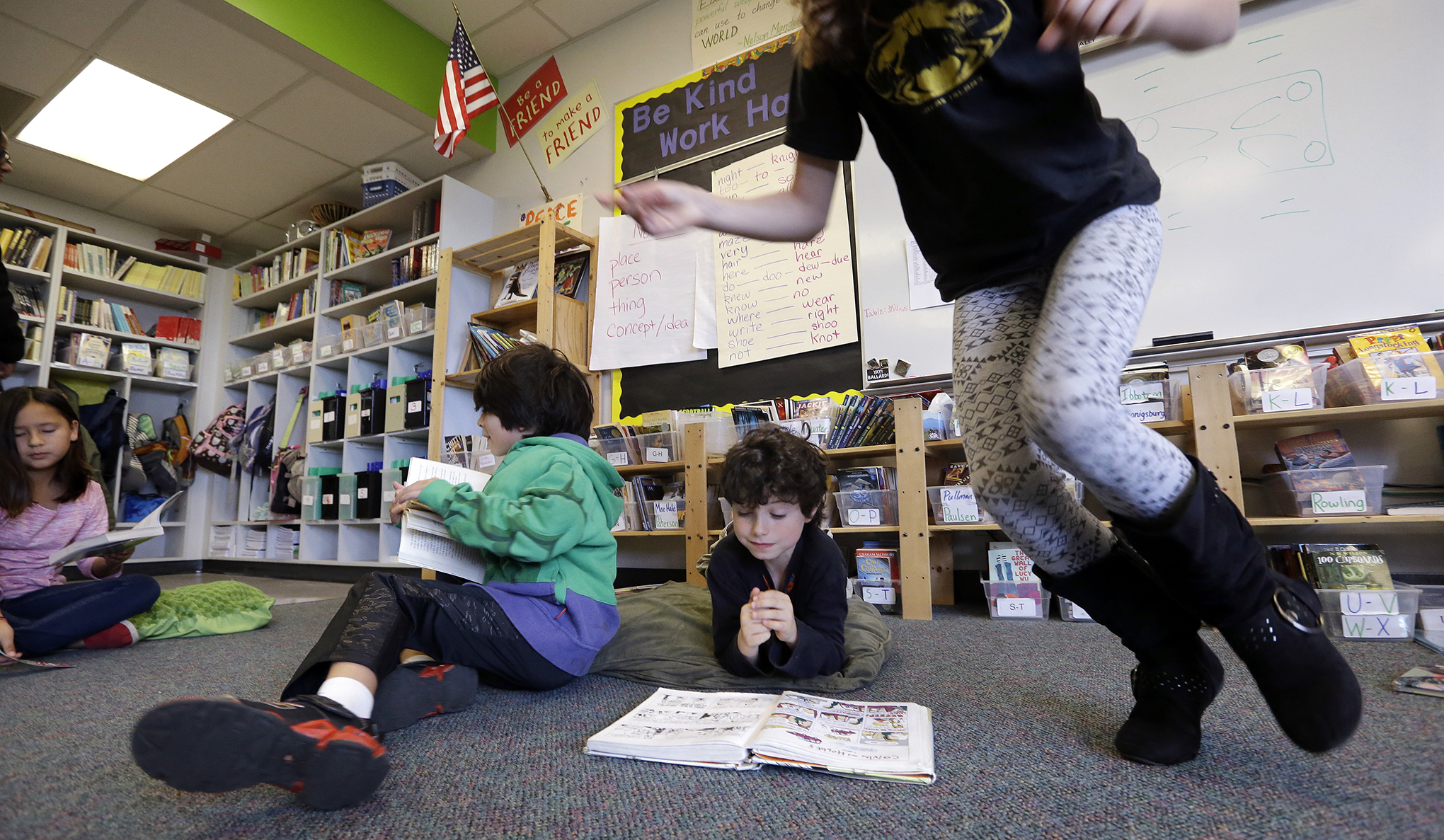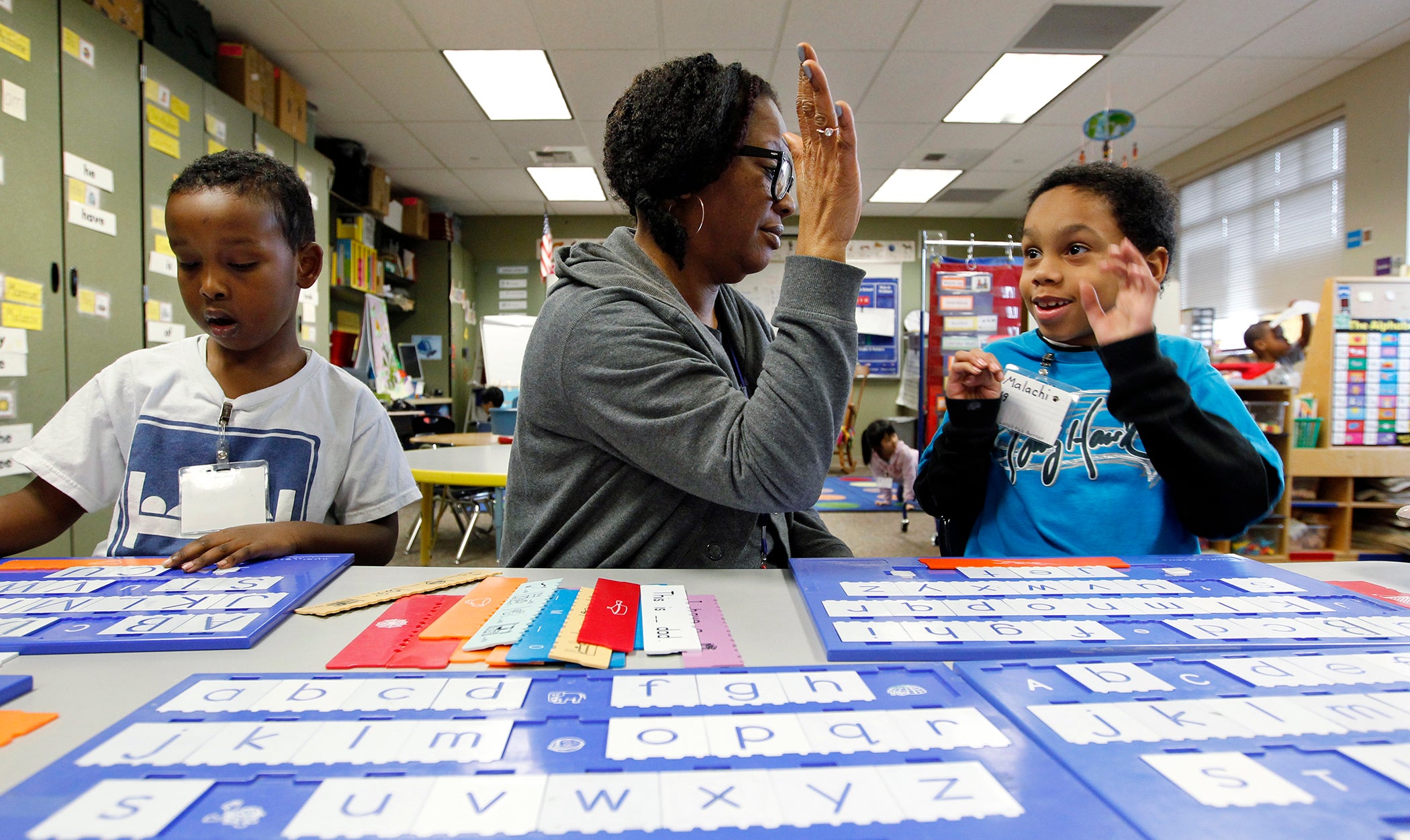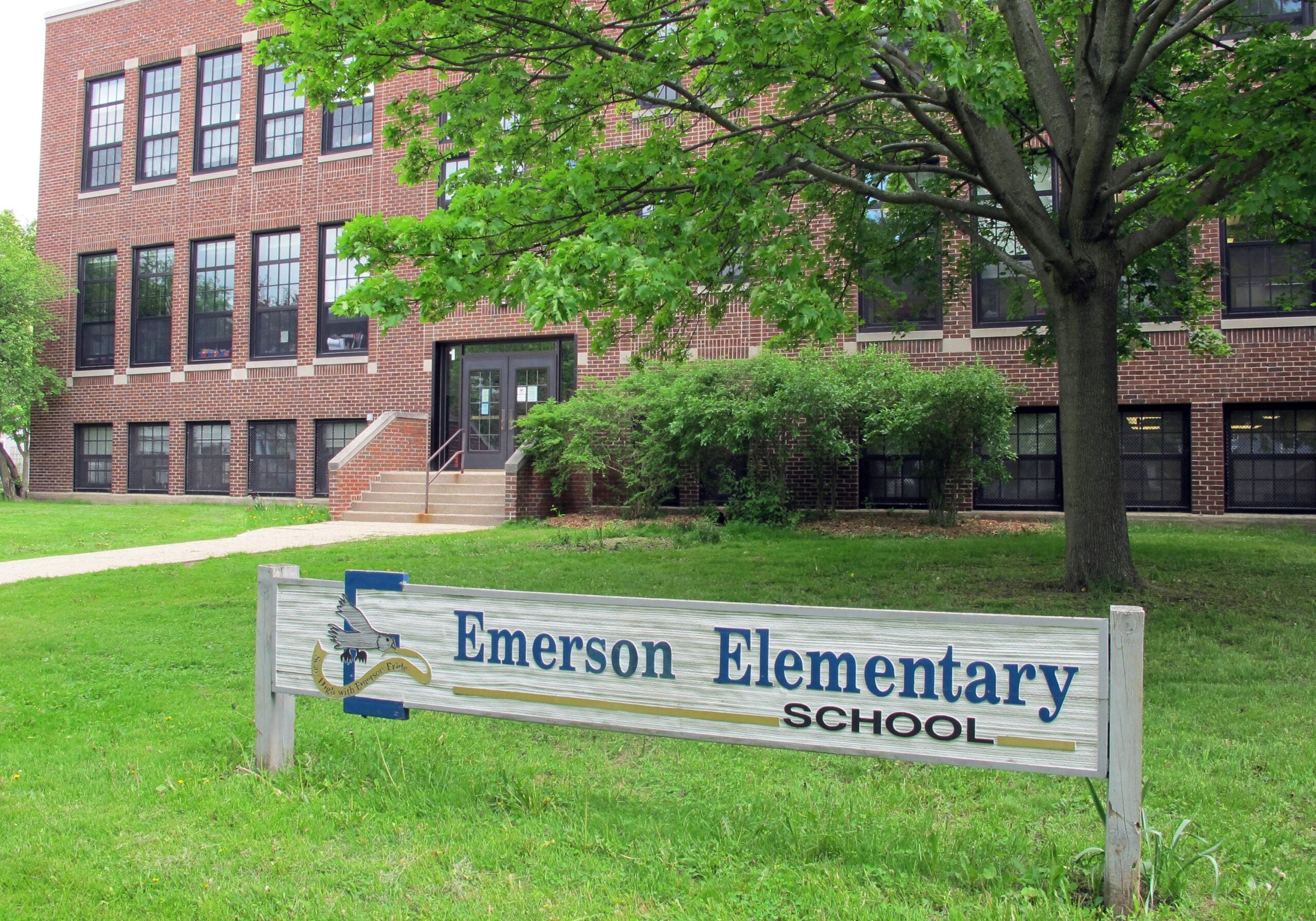Wisconsin education officials have released guidance for schools to reopen this fall amid the ongoing COVID-19 pandemic.
The Department of Public Instruction says flexibility will be key in reopening classrooms in Wisconsin’s 421 school districts. That flexibility includes the ability to shift between in-person, physically distanced and virtual learning as they deal with the changing aspects of the coronavirus.
“Schools districts are good planners, but they’re planning for something they really, quite frankly, never have had to plan before in this detail,” Deputy State Superintendent Mike Thompson told WPR’s “The Morning Show.”
Stay informed on the latest news
Sign up for WPR’s email newsletter.
DPI’s 87-page planning document includes options for alternative schedules. Under one proposal, students would attend school for in-person learning for four days straight, then schools would close on the fifth day to allow for “deep cleaning.”
Another proposes a two-day rotation where students are in the classroom for two full days per week for in-person learning and then participate in virtual learning on the other days of the week.
The plan doesn’t mandate that school districts all default to one plan, but offers a slew of options that districts can choose from, and have the option to rotate between based on how the virus is affecting their communities, their availability of internet access and devices, and other factors.
“We wanted to make sure that all of our districts, whether they were a large urban district, or a suburban district, or a rural district, would find this guidance helpful in their decisions about reopening their schools,” said John Ashley, executive director of the Wisconsin Association of School Boards, which consulted with DPI as the agency drafted its guidance. “What we’re all most interested in is getting our schools open, and having safe environments for our students and our staff.”
For example, a district could begin the school year with students attending class in person, but switch to all-virtual learning if there were a coronavirus outbreak at school. It could also start virtually if the local infection rate is high, and then switch to a rotating schedule — one group of students is in the school buildings one week and virtual the next, while another group learns virtually the first week and then comes into classrooms the second — as the disease becomes less prevalent.
The Madison Metropolitan School District released a statement saying it will take a hybrid approach of both virtual and in-person instruction for the fall, with details to be hammered out in the coming weeks.
“The nature of COVID-19 presents many unknowns, and our approach to the fall will be flexible, nimble and with equity and safety at the center,” public information officer Tim LeMonds said in an email. “Considering these unknowns, our plan will also incorporate many contingencies, including responding to any resurgence of COVID-19 risk levels, school closures and the district’s ability to make a quick and smooth transition into a full virtual learning environment if needed.”
Another option laid out in the DPI plan would let school districts where older students all have devices, and are more capable of virtual learning without their parents’ help, keep middle- and high-schoolers mostly virtual, while using the upper-grade buildings to provide for more socially-distant learning for elementary school kids.
Sarah O’Donnell, the communications director for Stevens Point schools, said they’re working to use DPI’s guidance, as well as information from their local health department and other sources, to sketch out several options for the fall. Getting elementary school students safely into the best learning environment is top of mind, she said.
“We think that getting especially our youngest learners back in the classroom is really important — one, for that social/emotional piece, two, it’s really hard to teach younger learners how to read through a screen, and three, we don’t want parents or families starting to have to make really tough decisions like ‘Do I quit my job, or do I leave my second grader home alone?’” O’Donnell said.
Stevens Point sent out a survey to staff and parents to understand their concerns about schools and COVID-19 in order to help the district shape its reopening plan. In particular, O’Donnell said, parents want to see plans for safeguarding kids’ health in the school buildings by limiting outside visitors, potentially adding more lunch periods to keep kids spaced out, and being mindful of not overcrowding hallway and locker areas during passing periods.
In Green Bay, Superintendent Michelle Langenfeld said her district is hoping to get its plan out in the next month to give families time to plan. She noted that many parents are essential workers, so the district is factoring their needs into the eventual strategy.
“It’s really trying to be responsive to the needs of the community, and do it in the safest way possible for our students and staff,” she said. “If all goes well, and we can get to a place and space where we can bring in children, that would certainly be a place that we know our families and our students want to go, and our staff as well.”
Even if students go back in person, she said, she wants parents to start getting a plan into place now in case the virus forces a similar situation to last March — schools shut down on short notice, and a shift back to distance learning.
Langenfeld said the district has also been talking regularly with the local health department to determine local risks from the disease, and how best to respond to them.
“Student safety and health are our No. 1 priority, and also looking at how do we ensure equity and access for every child we serve,” she said. “During and after the school closure, we saw many glaring areas and issues of equity, and work to do in that area.”
Milwaukee Public Schools, too, sent out a statement saying they haven’t finalized plans for the fall, but are weighing different options as they talk to DPI, health officials and the district’s families.
“We know that we have to be flexible and adaptable due to this evolving situation to ensure the health and safety of students and staff,” the statement read.
The Wisconsin Education Association Council, a statewide teachers union, also advised on DPI’s reopening guidance, though it urged teachers to pressure their administrators and school boards to make sure they were listening to teachers and support professionals as the districts move forward with their own plans.
“Collaboration is imperative for a safe return to schools,” WEAC President Ron “Duff” Martin said in a written statement. “WEAC has partnered in discussions with the DPI, school administrators, education boards and others as this guidance was developed. The same should happen in every single school district as individual plans are made. Educators must be at the table for a safe, stable reopening.”
WEAC released its own platform on safely reopening schools this spring.
The DPI document also includes guidance for school libraries, including suggesting they have bins ready to quarantine returned materials before circulating them back out to students, and pushing teachers and students to rely more heavily on online catalogs to pick out books and other materials. It offers a framework for outside school programs, like before- and after-school tutoring, and asks schools to look specifically at how to best serve populations with special needs, English-language learners and students in gifted and talented programs.
The guidance also includes plans for infection control and mitigation. DPI encourages districts to determine their own protocol on the use of facial coverings by staff and students, saying the Department of Health Services recommends cloth face coverings for teachers, staff and older students when social distancing is difficult to maintain.
DPI announced last week that it would distribute cloth masks and infrared thermometers to public, charter and private schools across the state.
One major concern is cost. Regular deep-cleanings will cost money in staff and supplies. If school districts need to add bus routes to maintain social distancing as kids are ferried to and from school, that will cost extra money in gas and drivers.
School districts are also looking at expanding mental health resources, as students and teachers are grappling with the emotional toll of the pandemic.
Langenfeld, with Green Bay schools, said her district is looking for ways to partner with local organizations and businesses to meet some of the district’s needs.
“If we work in partnership, it may mitigate some of that cost, but it certainly isn’t going to mitigate it all,” she said.
DPI will be able to distribute some federal funding from the CARES Act, the federal coronavirus aid package that passed earlier this year. Thompson, with DPI, said it will be primarily used for districts that have the greatest challenges with distance learning.
The state government is looking at a tough financial outlook because of the pandemic, and more locally, districts are concerned that revenues from property taxes will be down, as well. That’s likely to strain school districts’ budgets.
Finances are just one of many unknowns school districts, students, teachers and parents are facing as they try to game out their fall plans.
“We don’t know how many parents are going to feel comfortable sending their kids back,” said Ashley, with the WASB.
DPI acknowledged this possibility in its document, noting that students and staff may not feel comfortable in school buildings, and may continue working or learning from home.
“When kids go back to school, and parents send their kids to school, they need to feel like they’re sending their kids in a safe environment, and all kids need to feel like they’re in a safe environment,” Thompson told “The Morning Show.” “We know kids can’t learn when they’re afraid.”
The guidance was released on Monday, two days before the state Assembly’s education committee is set to hear testimony from DPI and other school groups on reopening.
O’Donnell, from Stevens Point schools, acknowledged that the guidelines DPI released, and the plans school districts are crafting in response, aren’t necessarily going to provide the kind of certainty that parents and students want yet.
“There’s a want and a need on our part, and a want and a need on our community’s part, for us to say ‘for sure, this is what we’re doing,’ and we don’t feel comfortable doing that right now,” she said. “We just want to make sure that we’re on the right track, with our board, with our community, so that we have time to make sure we’re ready for whatever September looks like.”
Wisconsin Public Radio, © Copyright 2025, Board of Regents of the University of Wisconsin System and Wisconsin Educational Communications Board.
